Minerva
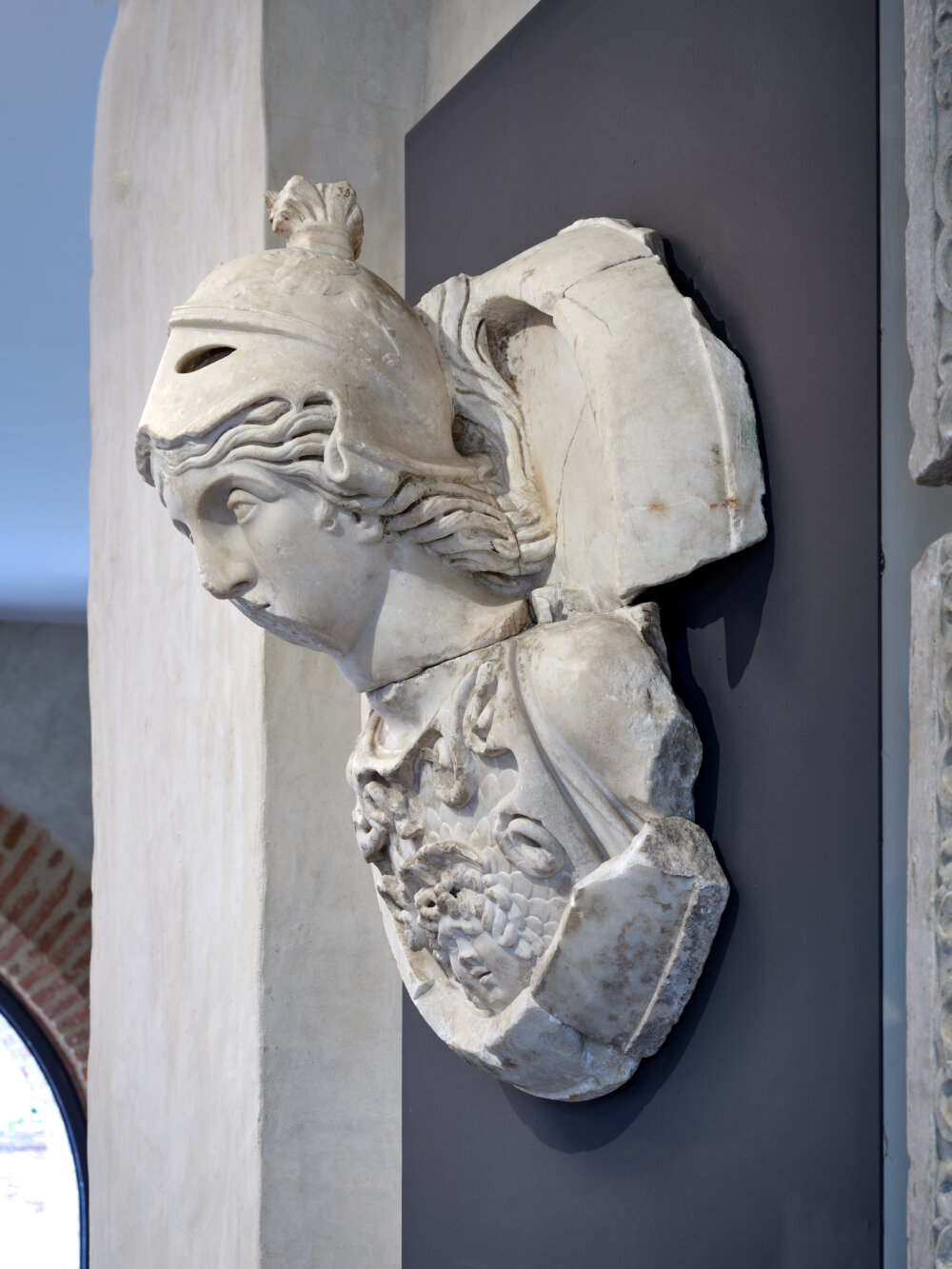
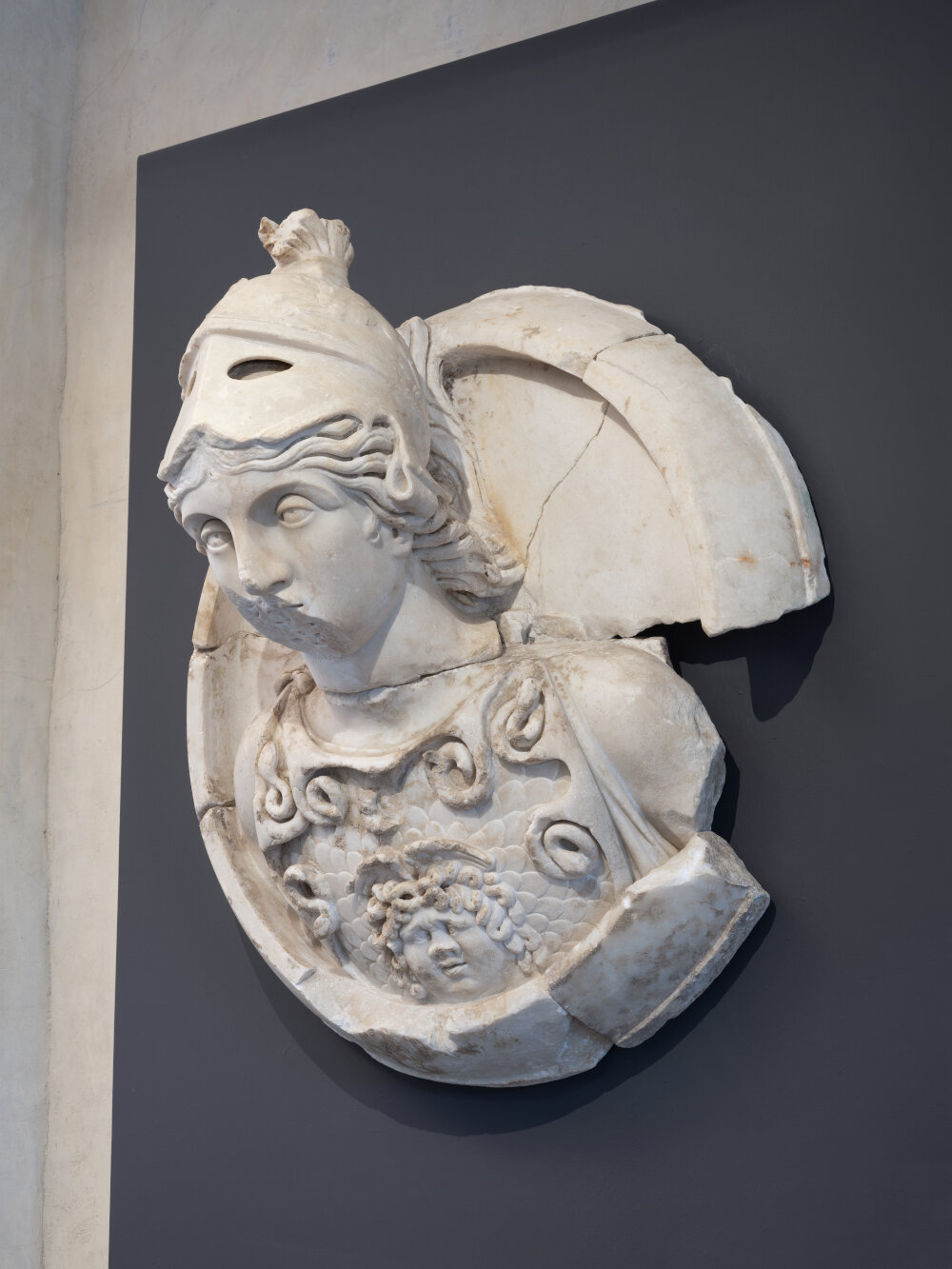
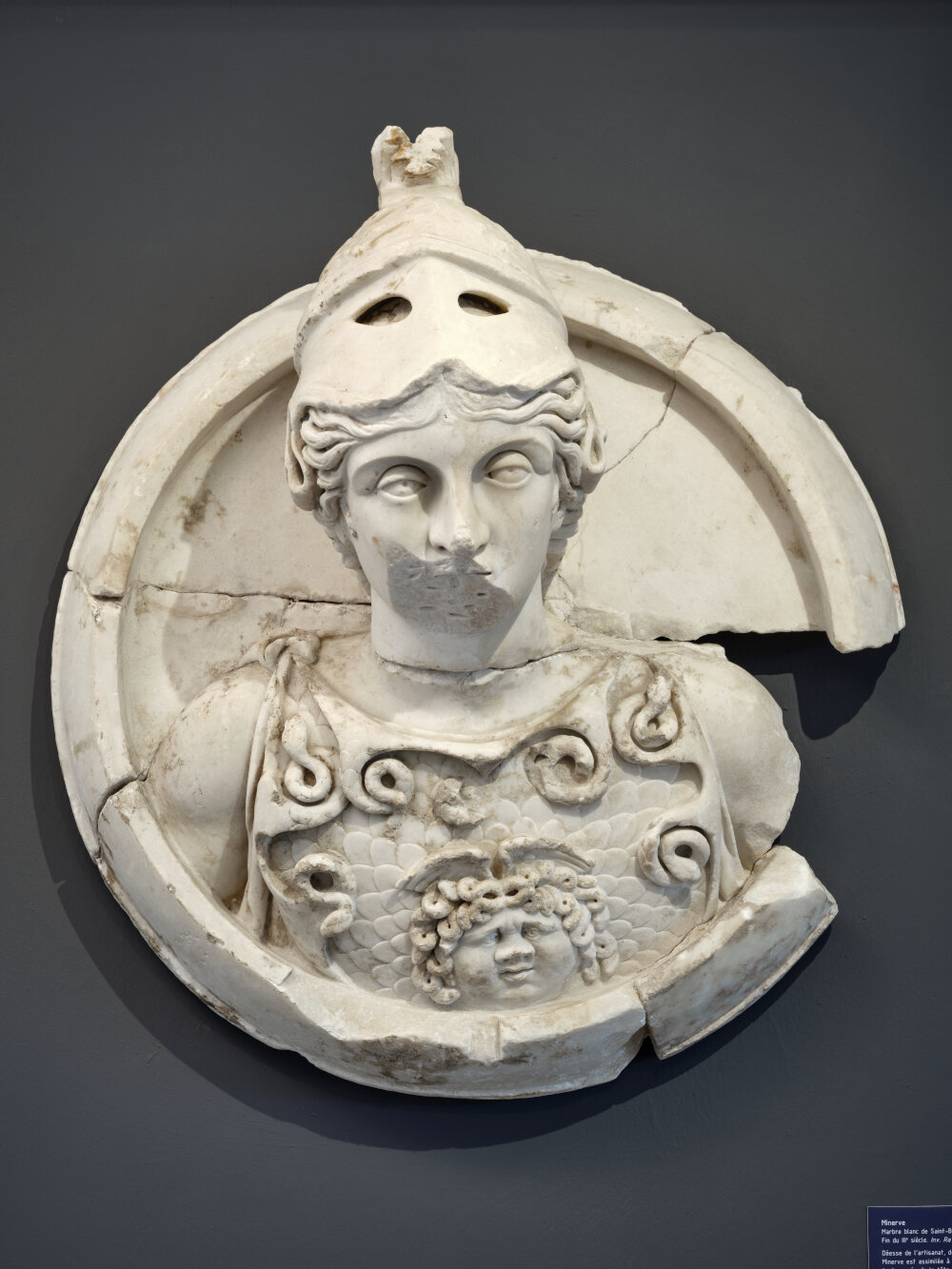
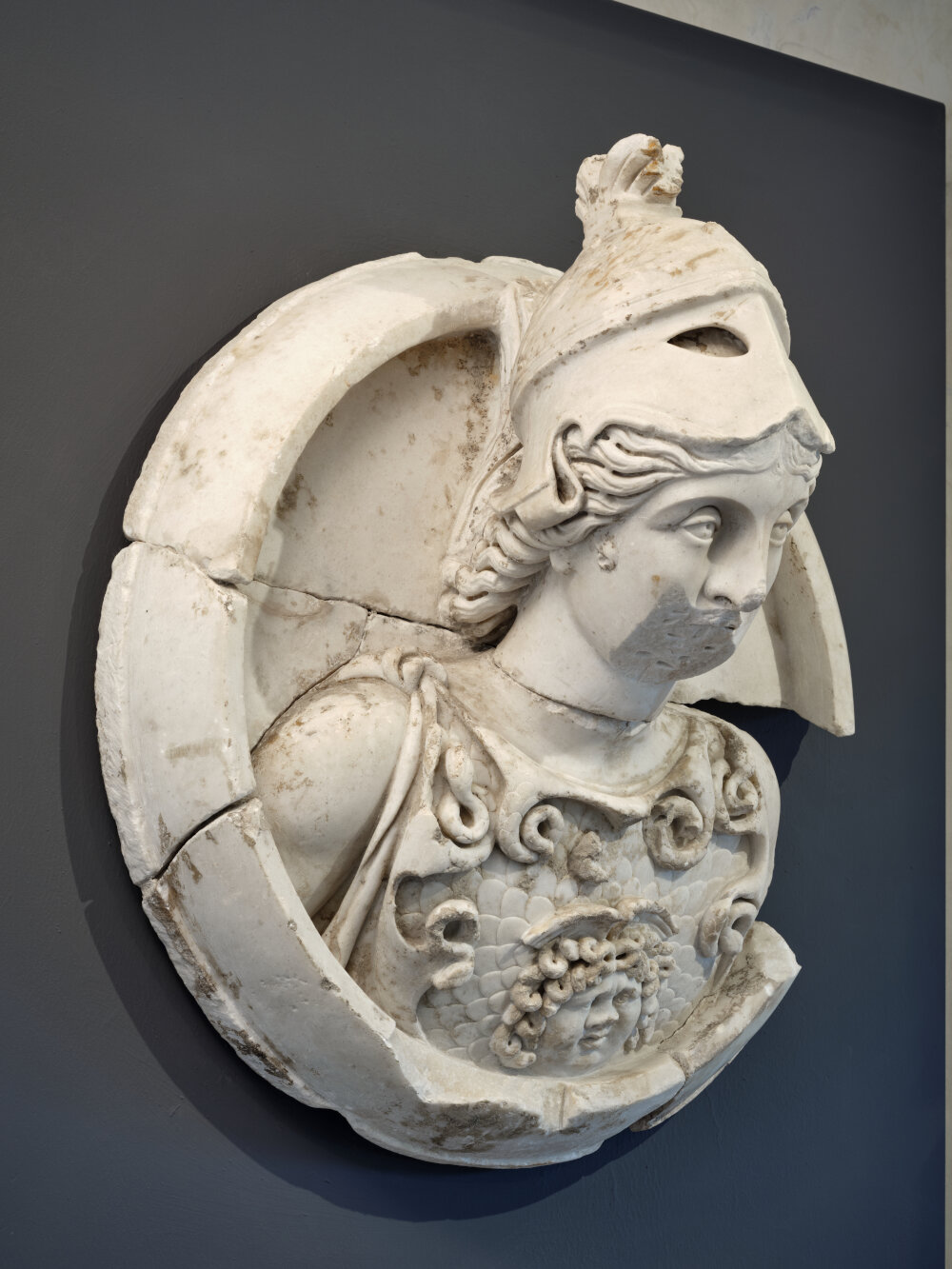
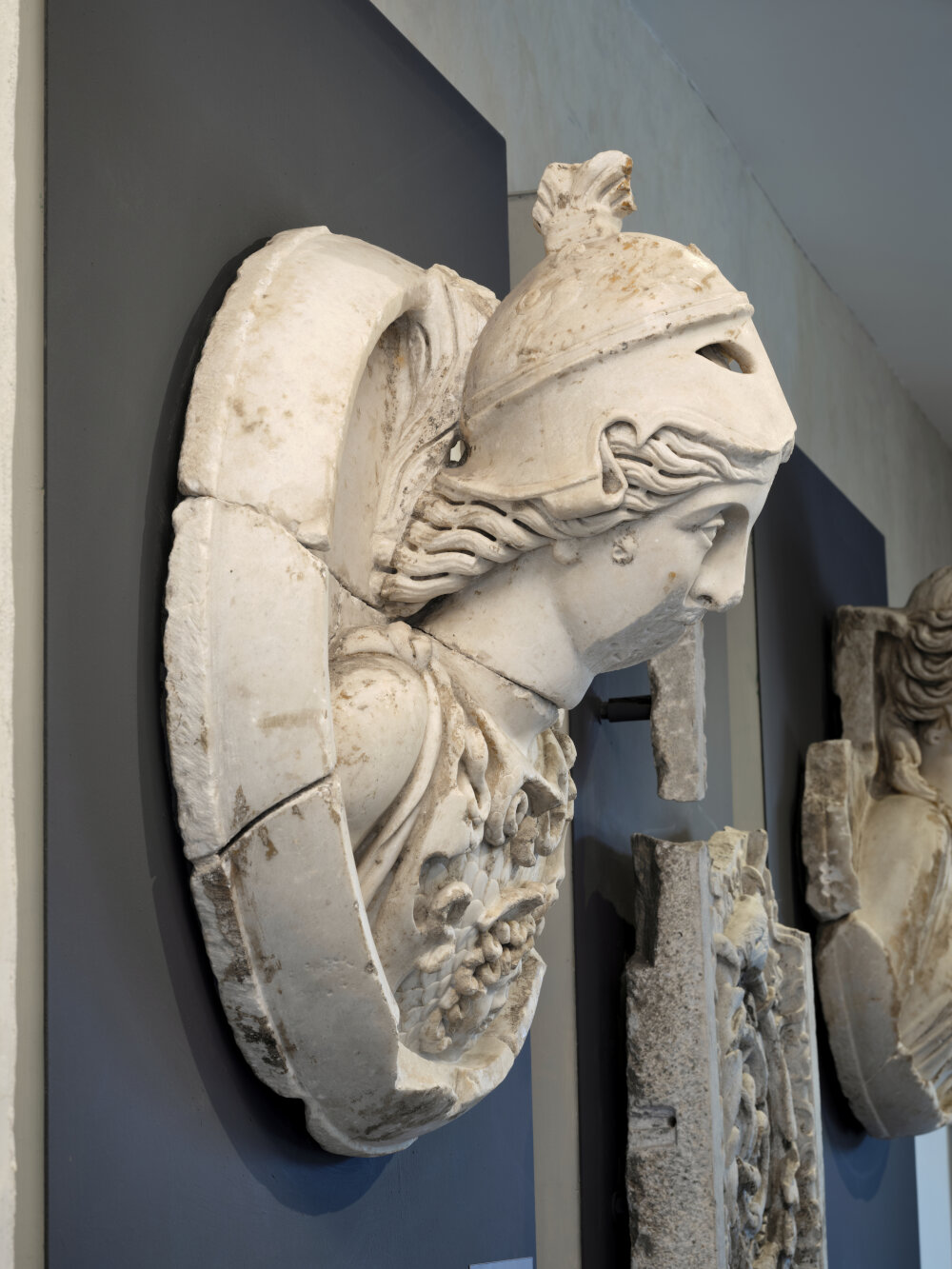
- Date de création
- End of the 3rd-first third of the 4th century
- Material
- Saint-Béat marble (Haute-Garonne)
- Dimensions
- H. 79 x l. 76 x P. 42 (cm)
- Inventory number
- Ra 34 j
- Photo credits
- Daniel Martin
Goddess of handicraft, wisdom, intelligence and warfare, Minerva was the result of syncretism with the Greek goddess Athena, believed to have been born from the forehead of her father Zeus. Here she is portrayed wearing a helmet, which has been pushed backwards to show the two holes in the visor where the eyes should be. The bust of the goddess is protected by the aegis, a goatskin cuirass trimmed with snakes and adorned with the head of the Gorgon Medusa, who had the power to petrify whoever made eye contact with her. Often depicted in figurative form on breastplates, she was considered to be a protective force.
P. Capus
Bibliography
- Beckmann 2020 S.E. Beckmann, « The Idiom of Urban Display: Architectural Relief Sculpture in the Late Roman Villa of Chiragan (Haute-Garonne), » American Journal of Archaeology, 124, 1, pp. 133–160. p. 138, fig. 4
- Cazes et al. 1999 D. Cazes, E. Ugaglia, V. Geneviève, L. Mouysset, J.-C. Arramond, Q. Cazes, Le Musée Saint-Raymond : musée des Antiques de Toulouse, Toulouse-Paris. p. 85
- Du Mège 1835 A. Du Mège, Description du musée des Antiques de Toulouse, Toulouse. no 156
- Du Mège 1828 A. Du Mège, Notice des monumens antiques et des objets de sculpture moderne conservés dans le musée de Toulouse, Toulouse. no 69
- Espérandieu 1908 É. Espérandieu, Recueil général des bas-reliefs de la Gaule romaine, 2. Aquitaine, Paris. no 11
- Rachou 1912 H. Rachou, Catalogue des collections de sculpture et d’épigraphie du musée de Toulouse, Toulouse. no 34 j
- Roschach 1892 E. Roschach, Catalogue des musées archéologiques de la ville de Toulouse : Musée des Augustins, Musée Saint-Raymond, Toulouse. no 34 d
To cite this notice
Capus P., "Minerva", in The sculptures of the roman villa of Chiragan, Toulouse, 2019, online <https://villachiragan.saintraymond.toulouse.fr/en/ark:/87276/a_ra_34_j>.